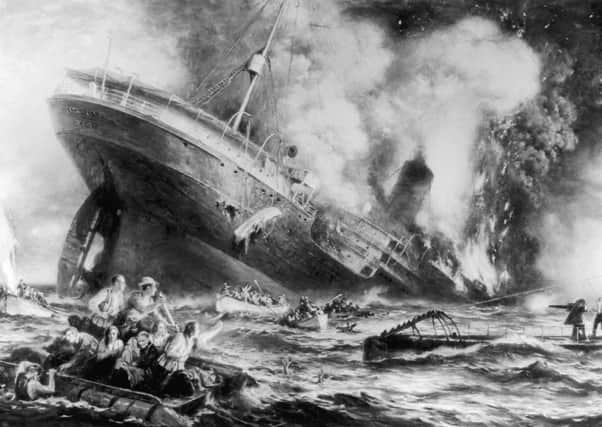Explosion fears exposed Lusitania ‘cover-up’


In 1982, almost 70 years after the Cunard liner RMS Lusitania was sunk by a German U-boat off the coast of Ireland, some officials expressed concern that the truth was still being covered up.
The Ministry of Defence (MoD) even went so far as to warn divers planning to explore the wreck that it could contain explosives – even though it had always maintained the ship was not carrying any on her final, fateful voyage.
Advertisement
Hide AdAdvertisement
Hide AdThe sinking of the Lusitania on 7 May, 1915 with the loss of 1,198 lives – 124 of them American – as she neared the end of her run from New York to Liverpool was one of the pivotal events of the war.
It helped swing popular opinion in the hitherto resolutely neutral United States against Germany – paving the way for America’s entry into the conflict two years later on the side of Britain and France.
But while British propagandists exploited the attack on unarmed civilians, Germany insisted its action was justified on the grounds the ship was known to be carrying “large quantities of war material”.
Britain did eventually disclose that there had been 5,000 cases of small arms ammunition among the cargo – however rumours continued to circulate that she was also carrying dangerous high explosives which contributed to the final disaster.
It was said that the explosives had caused a massive secondary explosion after she was hit by the German torpedo, causing the 790ft Lusitania to sink rapidly before most of those on board had a chance to escape.
Those old claims came back to haunt Whitehall when, in 1982, a salvage company announced that it was planning to survey the wreck. Papers released by the National Archives at Kew, west London, show how officials feared it could all “blow up on us” if there were indeed explosives lurking among the debris.
Government lawyers in the Treasury Chambers turned to the Foreign and Commonwealth Office (FCO) for advice. NH Marshall in the FCO’s North American department was appalled at what he was being told.
“The facts are that there is a large amount of ammunition in the wreck, some of which is highly dangerous. The Treasury have decided that they must inform the salvage company of this fact,” he wrote.
Advertisement
Hide AdAdvertisement
Hide Ad“Although there have been rumours in the press that the previous denial of the presence of munitions was untrue, this would be the first acknowledgement of the facts by Her Majesty’s Government.”
The MoD could find no reference to any other munitions among the cargo. Nevertheless it decided it had to alert the salvagers to the potential danger. Jim Coombes at the Treasury Chambers contacted the FCO to warn that: “If it were now to come to light that there was some justification, however slight, for the torpedoing, HMG’s relations with America could well suffer.”